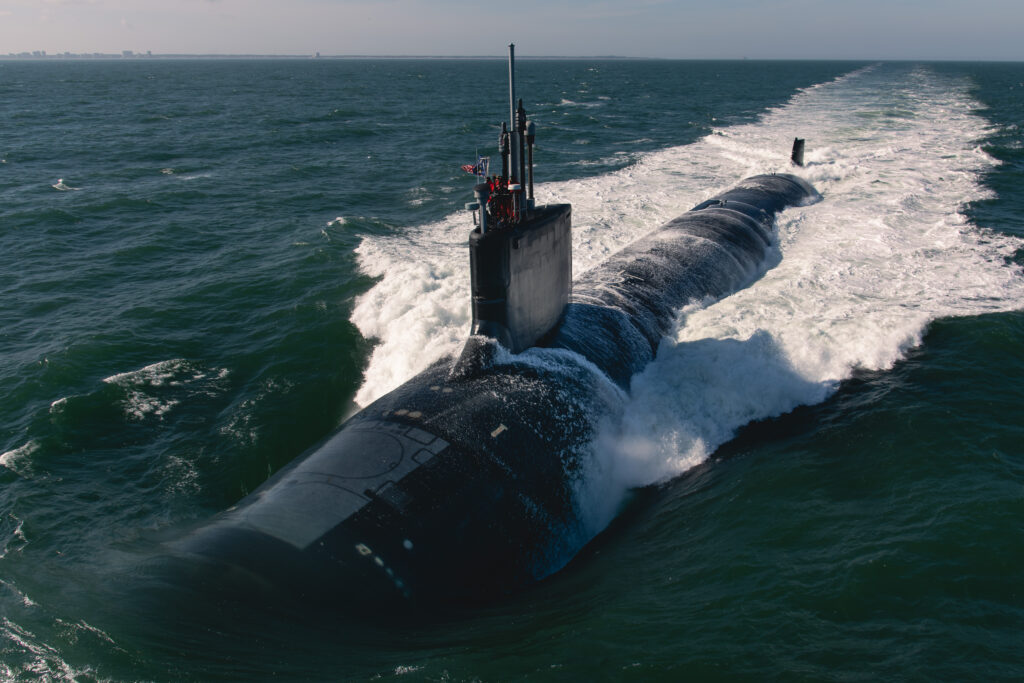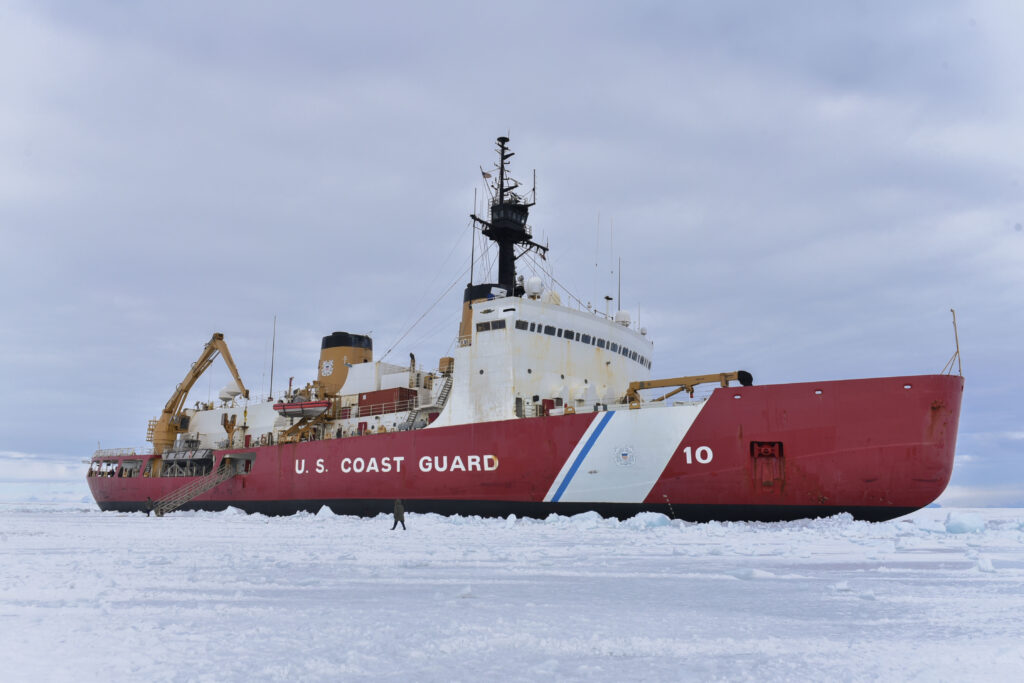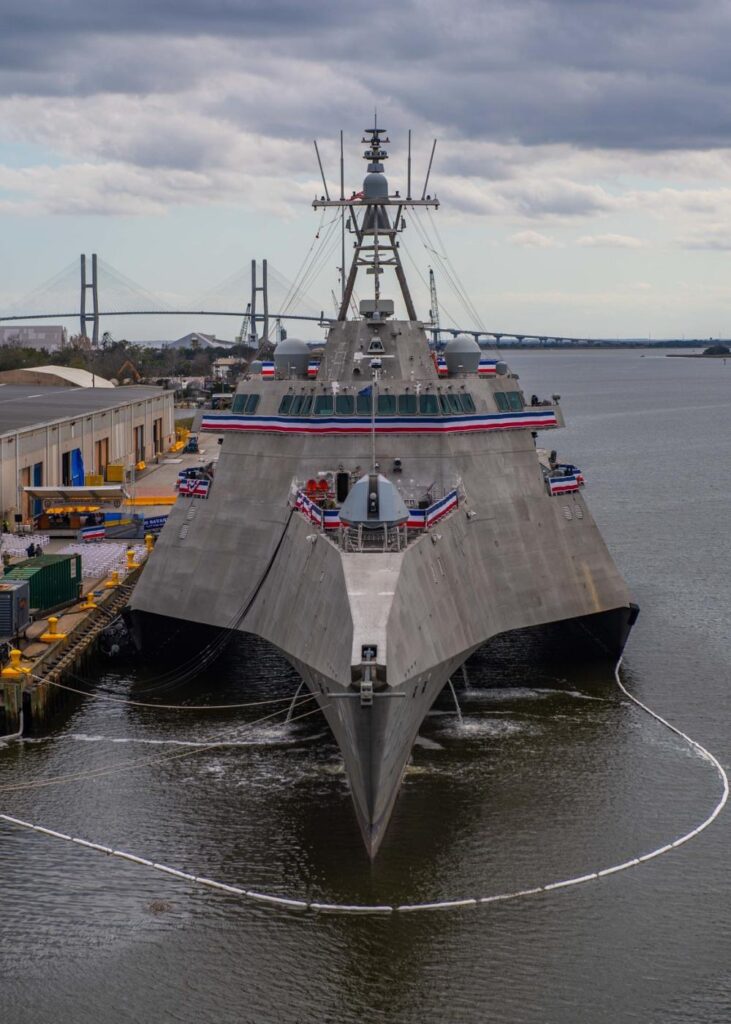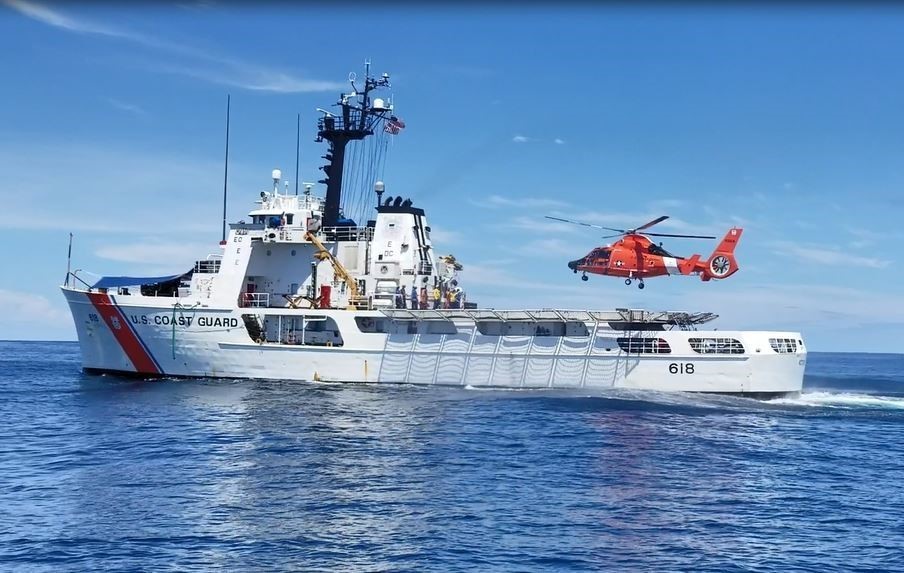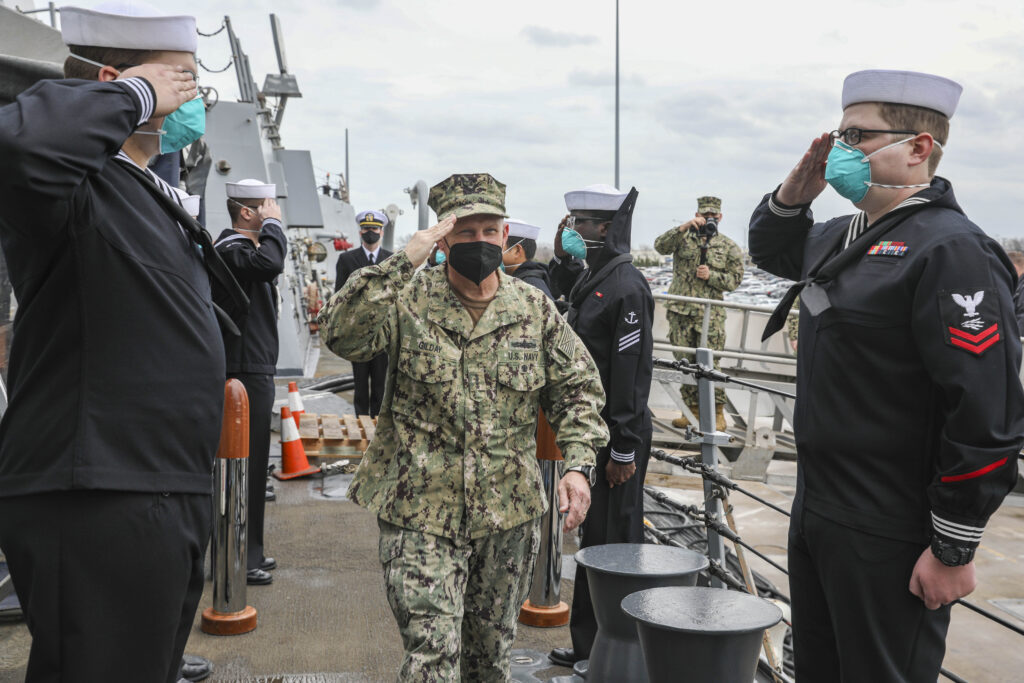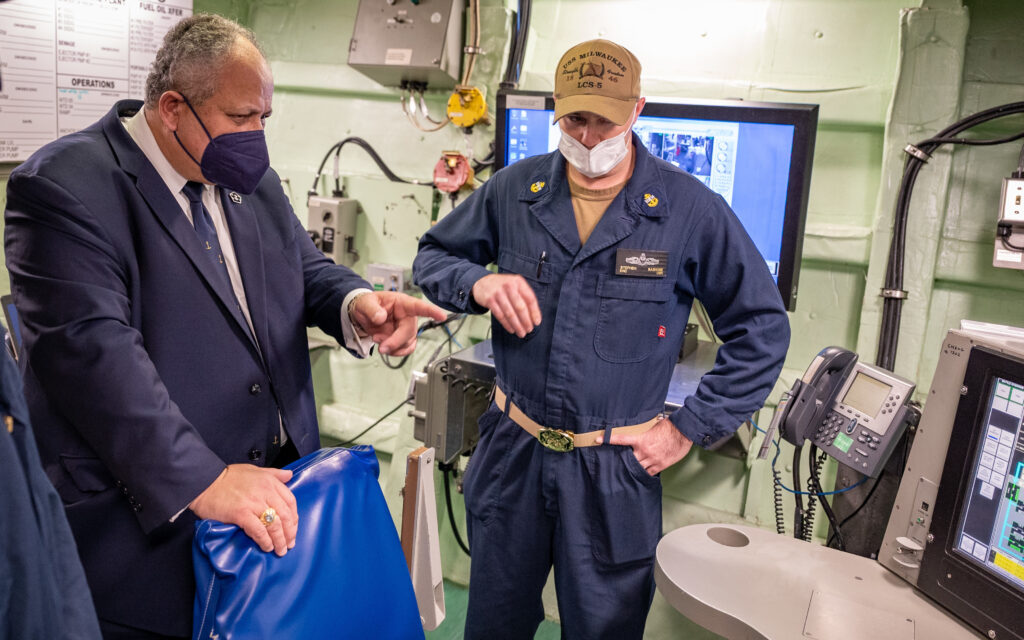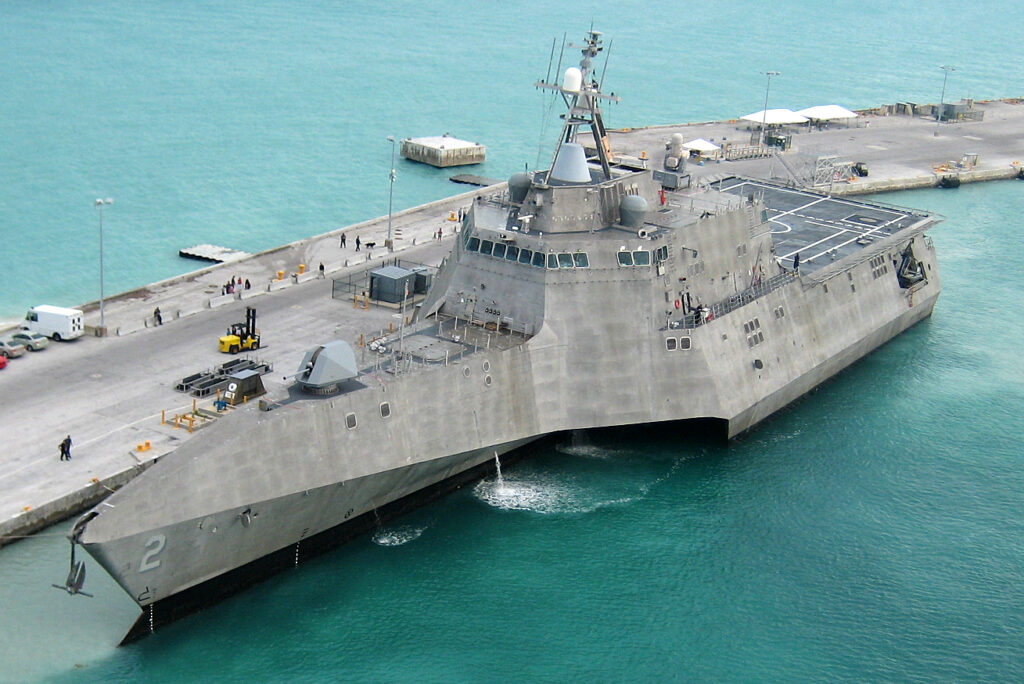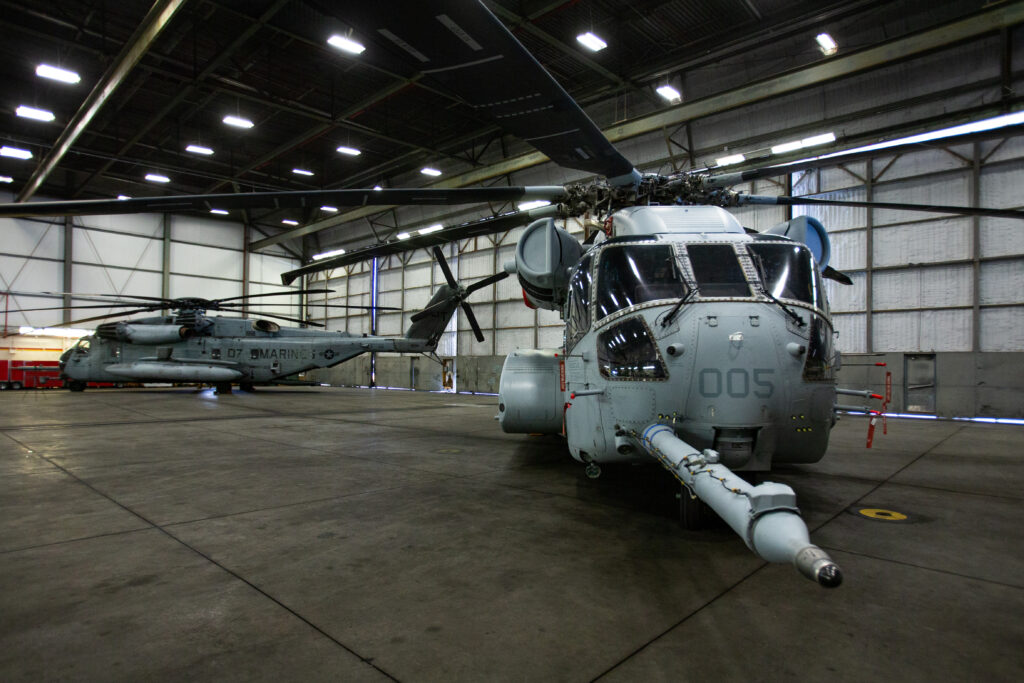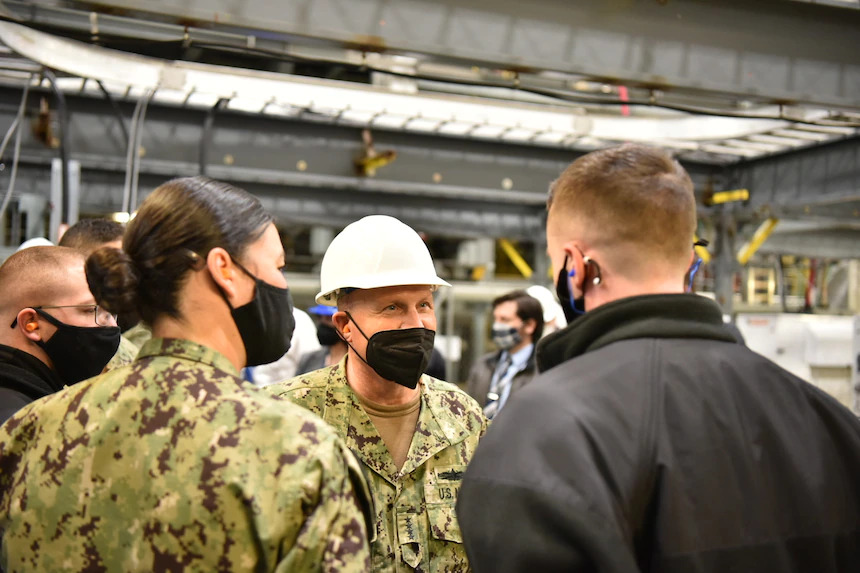Rep. Luria: Congress Needs Frank Budget Requirements from Navy — and Consequences of Not Funding Them

ARLINGTON, Va. — The Navy needs to be frank in telling Congress what it needs to meet its warfighting requirements in the National Defense Strategy and the consequences if requirements are not funded, the vice chair of the House Armed Services Committee said Feb. 7.
“As a member of Congress, what do we want to hear? We want the services to come to us and essentially say, ‘This is what we need, this is why, and — most of all — this is the risk of not doing it,’” said Rep. Elaine Luria, (D- Virginia), deputy chair of the HASC, in a conversation with the Hudson Institute’s Bryan Clark. “And that is a portion of what is not being communicated.
“It’s like a shell game,” Luria said. “The Navy comes to us and says, ‘We only want to build one DDG this year,’ but the other DDG is on your unfunded list?”
She said Congress needs to know the risks of not funding budget requirements.
“Then it is on Congress to make a decision about the risk of not doing those things,” she said. “It is never articulated. It shouldn’t be up to Congress to say to the Navy, ‘Hey, we really want to give you more,’” she said.
“It’s all backwards,” Luria said. “There should be a strategy, the strategy drives the requirements, the requirements drive the POM [Program Objective Memorandum], the POM [becomes] the budget.”
Luria, a retired Navy nuclear-trained surface warfare officer, said she watched recordings of the testimony before Congress during the 1980s of then-Navy Secretary John Lehman advocating his Maritime Strategy and a 600-ship Navy.
“Essentially, where the discussion led [was], ‘This is what we need — that equals 600 ships — and here’s the risk of not doing that,’” she paraphrased Lehman as saying.
“That’s not being communicated in that way [today],” noting that things like 30-year shipbuilding plans are not “put into context, what that means, what presence delivers, and what deterrence that equates to with regard to China potentially trying to take Taiwan by force. It’s not being communicated in a way that’s compelling.
“There is a lack of a maritime strategy, and it is important to understand what the strategy is,” Luria said. “I think the previous administration had a good focus on what needed to be done. … We’re kind of starting over again without really understanding what the future of the fleet looks like.”
Luria questioned the integrated deterrence concept of the current administration as not something new, but a “just the newest buzzword. Has anyone clearly defined what it is?”
The lawmaker said for deterrence, “you actually have to have deterrence — you have to have the forces.”
She has been critical of Navy plans to “divest to invest,” noting the investments are frequently short-changed, resulting, for example, in “two decades of lost shipbuilding opportunities.”
Luria affirmed that more budget resources “need go to the Navy and the Air Force because that’s the nature of the [Pacific] theater.”
